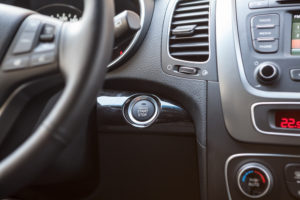A rarely discussed, but very important, highway safety issue concerns traffic safety at railroad crossings. Last year, according to data from the Federal Railroad Administration Office of Safety, there were nearly 2,000 incidents that involved collisions between motor vehicles and trains at railroad crossings. Although relatively infrequent, when they do occur, collisions between trains and motor vehicles can be catastrophic: of the nearly 2,000 incidents in 2010, 261 resulted in a fatality.
The unfortunate fact about these numbers—as is the case with many traffic accidents—is that collisions between trains and vehicles are largely preventable. Many safety practices are already in place to protect vehicles: crossing guards, flashing lights, warning and caution signs, and train whistles are all intended to alert vehicles of approaching trains. Drivers should of course be alert to these cautionary signals, and in addition, there are several safety tips that all drivers should obey. Some of these, offered by the organization Operation Lifesaver, include:
- Be patient and always yield to the train. This means never racing a train to the crossing; trains move faster than you think and if you see a train approaching, you should wait for it to proceed before crossing.
- Understand that trains cannot stop quickly. A freight train moving at 55 miles per hour may need up to a full mile before it can come to a complete stop.
- Never drive around lowered gates. This is both illegal and deadly.
- Do not get trapped on the tracks. Only approach and proceed through the crossing when you are sure that you can cross completely without having to stop.
- In the event that your vehicle stalls on the tracks and a train is coming, immediately abandon the vehicle and move quickly away from the tracks in the direction the train is coming. Moving in this direction minimizes the chance of injury from debris.
- At crossings where there are multiple tracks, be sure to watch for trains on all tracks and from both directions.
- When crossing tracks, always do so at a designated crossing, look both ways, and cross quickly without stopping.
- Always be expecting a train. Freight trains do not follow set schedules.
- Stay alert at railroad crossings. This means no texting, headphones, or other distractions that would make it difficult to hear an approaching train.
Above all, preventing accidents at railroad crossing depends on being alert and cautious. With railroad crossings, it is often all too easy for drivers to settle into the routines of their commute and take for granted that they rarely—if ever—have to yield to a train. But given the risks at stake and the severe disadvantage when a vehicle collides with a train, patience and attention are crucial. Following basic safe driving principles will help to ensure that you don’t fall victim to a tragic collision.

The Legal Examiner and our Affiliate Network strive to be the place you look to for news, context, and more, wherever your life intersects with the law.










Comments for this article are closed.